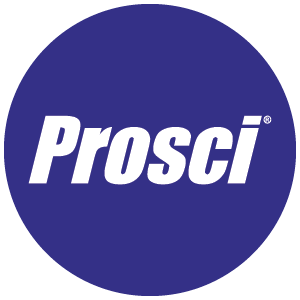Defining the Scope of Change Management

4 Mins
Updated: August 13, 2025
Published: August 22, 2015

Defining the scope of change management and specific change management systems helps you ensure that all stakeholders understand the project and goals, and work together toward a shared definition of success.
Change Management Scope
Prosci's research identifies key components of change management and tools for change management, including:
- Change management process
- Readiness assessments
- Communications and communications plan
- Coaching and manager training for change management
- Training and employee training development
- Sponsorship activities and sponsor plan
- Resistance management
- Data collection, feedback analysis and corrective action
- Celebrating and recognizing success
Change management process
The change management process is the sequence of steps or activities that a change management team or project leader would follow to apply change management to a project or change. Prosci's 3-Phase Process is a structured, repeatable approach for driving organizational change: It is important to note what change management is and what change management is not, as defined by the majority of Prosci's Best Practices in Change Management research participants.
It is important to note what change management is and what change management is not, as defined by the majority of Prosci's Best Practices in Change Management research participants.
- Change management is not a stand-alone process for designing a business solution.
- Change management is the processes, tools and techniques for managing the people-side of change.
- Change management is not a process improvement method.
- Change management is a method for reducing and managing resistance to change when implementing
- process, technology or organizational change.
- Change management is not a stand-alone technique for improving organizational performance.
- Change management is a necessary component for any organizational performance improvement process to succeed, including programs like: Six Sigma, business process re-engineering, Total Quality Management, organizational development, restructuring, and continuous process improvement.
- Change management is about managing change to realize business results.
Readiness assessments
Assessments are tools used by a change management team or project leader to assess the organization's readiness to change. Readiness assessments can include organizational assessments, culture and history assessments, employee assessments, sponsor assessments and change assessments (e.g., Impact Assessments and ADKAR Assessments). Each tool provides the project team with insights into the challenges and opportunities they may face during the change process.
- Assess the scope of the change, including: How big is this change? How many people are affected? Is it a gradual or radical change?
- Assess the readiness of the organization impacted by the change, including: What is the value system and background of the impacted groups? How much change is already going on? What type of resistance can be expected?
- Assess the strengths of your change management team.
- Assess the change sponsors and take the first steps to enable them to effectively lead the change process.
Prosci's 10 Aspects of Change Impact
Communication and communication planning
Many managers assume that if they communicate clearly with their employees, their job is done. However, there are many reasons why employees may not hear or understand what their managers are saying the first time around. In fact, you may have heard that messages need to be repeated 6 to 7 times before they are cemented into the minds of employees. That is because each employee’s readiness to hear depends on many factors. Effective communicators carefully consider three components: the audience, what is said, and when it is said.
For example, the first step in managing change is building Awareness around the need for change and creating a Desire among employees. Therefore, initial communications are typically designed to create Awareness around the business reasons for change and the risk of not changing. Likewise, at each step in the process, communications should be designed to share the right messages at the right time.
The Prosci ADKAR Model
 Communication planning, therefore, begins with a careful analysis of the audiences, key messages, and the timing for those messages. The change management team or project leaders must design a communication plan that addresses the needs of people on the front lines of the organization, people managers, and executives. Each audience has particular needs for information based on their role in the implementation of the change.
Communication planning, therefore, begins with a careful analysis of the audiences, key messages, and the timing for those messages. The change management team or project leaders must design a communication plan that addresses the needs of people on the front lines of the organization, people managers, and executives. Each audience has particular needs for information based on their role in the implementation of the change.
Coaching and manager training for change management
Supervisors will play a key role in managing change. Ultimately, the direct supervisor has more influence over an employee’s motivation to change than any other person at work. Unfortunately, supervisors as a group can be the most difficult to convince of the need for change and can be a source of resistance. It is vital for the change management team and executive sponsors to gain the support of supervisors and to build change leadership. Individual change management activities should be used to help these supervisors through the change process.
Once managers and supervisors are on board, the change management team must prepare a coaching strategy. They will need to provide training for supervisors including how to use individual change management tools with their employees.
Training and training development
Training is the cornerstone for building knowledge about the change and the required skills. Project team members will develop training requirements based on the skills, knowledge and behaviors necessary to implement the change. These training requirements will be the starting point for the training group or the project team to develop training programs.
Sponsor activities and sponsor roadmaps
Business leaders and executives play a critical sponsor role in change management. The change management team must develop a plan for sponsor activities and help key business leaders carry out these plans. Sponsorship should be viewed as the most important success factor. Avoid confusing the notion of sponsorship with support. The CEO of the company may support your project, but that is not the same as sponsoring your initiative.
Sponsorship involves active and visible participation by senior business leaders throughout the process. Unfortunately many executives do not know what this sponsorship looks like. A change agent's or project leader's role includes helping senior executives do the right things to sponsor the project.
Managing resistance
Resistance behaviors from employees and managers are a normal reaction to organizational change, and effective change managers address it proactively through resistance prevention approaches. But, even with the best planning, some resistance behaviors can persist and threaten a project's success.
Resistance management is the processes managers and executives apply along with the support from the project team. To be effective, the change management team needs to identify and understand the root causes of resistance, and then address those root causes by removing the barriers that hold employees back from adopting changes.
Data collection, feedback analysis and corrective action
Employee involvement is a necessary and integral part of managing change. Managing change is not a one-way street. Feedback from employees is a key element of the change management process. Analysis and corrective action based on this feedback provides a robust cycle for implementing change.
Celebrating and recognizing success
Early successes and long-term wins must be recognized and celebrated. Individual and group recognition is also a necessary component of change management in order to cement and reinforce the change in the organization.
The final step in the change management process is the after-action review. It is at this point that you can stand back from the entire program, evaluate successes and failures, and identify process changes for the next project. This is part of the ongoing, continuous improvement of change management for your organization and ultimately leads to change competency.
Elements of a Change Management Program
These eight elements comprise the areas or components of a change management program. Along with the change management process, they create a system for managing change. Good project teams apply these components effectively to ensure project success, avoid the loss of valued employees, and minimize the negative impact of the change on productivity and an organization's customers.




